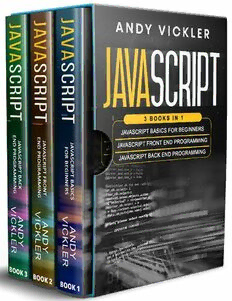Table Of Content© Copyright 2021 - All rights reserved.
The contents of this book may not be reproduced, duplicated or transmitted without direct written
permission from the author.
Under no circumstances will any legal responsibility or blame be held against the publisher for any
reparation, damages, or monetary loss due to the information herein, either directly or indirectly.
Legal Notice:
This book is copyright protected. This is only for personal use. You cannot amend, distribute, sell, use,
quote or paraphrase any part or the content within this book without the consent of the author.
Disclaimer Notice:
Please note the information contained within this document is for educational and entertainment
purposes only. Every attempt has been made to provide accurate, up to date and reliable complete
information. No warranties of any kind are expressed or implied. Readers acknowledge that the author
is not engaging in the rendering of legal, financial, medical or professional advice. The content of this
book has been derived from various sources. Please consult a licensed professional before attempting
any techniques outlined in this book.
By reading this document, the reader agrees that under no circumstances is the author responsible for
any losses, direct or indirect, which are incurred as a result of the use of information contained within
this document, including, but not limited to, —errors, omissions, or inaccuracies.
Table of Contents
JAVASCRIPT
JavaScript Basics for Beginners
Introduction
Chapter One: An Introduction to JavaScript
The Developer of JavaScript
The Use Cases of JavaScript
The <script> Tag
Display
Values
Numbers
Arithmetic
Strings
JavaScript Arrays
Chapter Two: JavaScript Variables
JavaScript Identifiers
Datatypes
Declaration of Variables
The Undefined Variables
Re-Declaration
Arithmetic
JavaScript String Concatenation
JavaScript Let Keyword
Chapter Three: JavaScript Constants
Block Scope
Primitive Values
JavaScript Constants
Chapter Four: Prompts and Conditionals
The JavaScript if Statement
The else Statement
The else if Statement
JavaScript Switch Statement
Chapter Five: JavaScript Strings and Arrays
The lastIndexOf() Method
What If the Index Is Not Found?
The search() Method
JavaScript Arrays
JavaScript Array concat()
Array Sorting
Reverse Gear
Sorting Numeric
Compare Function
Random Sorting
Array Values
Object Array Sorting
JavaScript Iteration
Chapter Six: JavaScript Loops
The for/in Loop
The forEach() Loop
The for/of Loop
Eternal Loops
JavaScript while Loops
The do/while Loop
JavaScript Break and Continue Statements
Chapter Seven: JavaScript Functions
The Invocation of Function
The () Operator
Functions as Variables
Local Variables
JavaScript Expressions
The constructor()
Self-Invoking
Functions or Objects
The toString() Method
Arrow Functions
Parameters & Arguments
Invocation
Global Objects
Reusing Methods
Chapter Eight: JavaScript Objects
The new Keyword
Object Properties
The Deletion
Dates
JavaScript Classes
Passing Parameters
Class Inheritance
Conclusion
References
JAVASCRIPT
JavaScript Front End Programming
Introduction
React Advantages
React Limitations
Chapter 1: ReactJS - Environment Setup
Local Environment Setup
With Webpack and Babel
The create-react-app Command
Chapter 2: Introducing React JSX
Why Use JSX?
How to Embed Expressions in JSX
JSX is an Expression
Specifying Attributes with JSX
How to Specify Children with JSX
Preventing Injection Attacks with JSX
JSX Represents Objects
Chapter 3: All About Components
The Component Lifecycle
Commonly Used Lifecycle Methods
Lifecycle Methods Rarely Used
Error Boundaries
Class Properties
Instance Properties
Chapter 4: State and Lifecycle
Converting Functions to Classes
Add Local State to a Class
Add Lifecycle Method to the Class
Correctly Using State
Data Flows Down
Chapter 5: ReactJS Props and PropTypes
Understanding Props
What Are React PropTypes?
Chapter 6: ReactJS Forms
Step One – Use JSX to Create a Basic Form
Step Two – Using Uncontrolled Components to Collect Form Data
Step Three – Using Controlled Components to Update Form Data
Step Four – Update Form Properties Dynamically
Chapter 7: ReactJS Events
Creating Events
Listening To Component Events
Adding Event Listeners
Handling Events
Passing an Argument to an Event Handler
Chapter 8: ReactJS Refs
Creating Refs
Using React Refs
Integration with DOM-Based Libraries
Rule of Thumb for Using Refs
Forwarding Refs
Chapter 9: ReactJS Lists and Keys
Rendering Lists in Components
All About Keys
Chapter 10: ReactJS Router
Routers
Routes
Switch Component
Link Component
Nested Routing
Protected Routes
Custom Routes
Chapter 11: ReactJS – Introduction to Flux
Introducing Flux
Mixin Example
Syncing with Web APIs
Chapter 12: ReactJS Animations
Introducing React Animation
Chapter 13: ReactJS Higher Order Components
Higher-Order Functions in JavaScript
What is a Higher-Order Component?
Higher Order Component Structure
Building a Higher Order Component - Example
Chapter 14: ReactJS Best Practices
Chapter 15: Let’s Create a React App
Step One: Setting Up a Boilerplate App
Step Two: The React App Structure
Step Three: Starting the Development Server
Conclusion
References
JAVASCRIPT
JavaScript Back End Programming
Introduction
Chapter One: Setting Up Your Node.js Environment
Windows
Mac and Linux
IDE Installation
IDE – Visual Studio Code
Hello World
Chapter Two: Node.js - REPL Terminal
Step One — Start and Stop the REPL
Step Two — Execute Code in the REPL
Step Three — Mastering REPL Shortcuts
Step Four — The REPL Commands
Chapter Three: Node.js - Package Manager (NPM)
Downloads and Installing Dependencies
Versioning
Running Tasks
Where Does npm Install the Packages?
Using or Executing Packages Installed With npm
Chapter Four: Node.js Callbacks and Promises
Chapter Five: Asynchronous JavaScript Programming
Synchronous JavaScript
Asynchronous JavaScript
Async Callbacks
Promises
Asynchronous Code Nature
Chapter Six: Node.js Event Loops and Event Emitters
Phase Overview
setImmediate() vs setTimeout()
process.nextTick()
process.nextTick() vs setImmediate()
Chapter Seven: Node.js Buffers
What Are Buffers?
More Fun With Buffers
Chapter Eight: Node.js Streams
What Are Streams?
Async Iterator
How to Create a Writable Stream
pipeline()
The Stream Module
Chapter Nine: Node.js File System
What is the Synchronous and Asynchronous Approach?
Important fs.module Methods
Chapter Ten: Node.js Global Objects
Global Object
Global Modules and Functions

